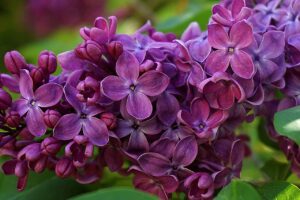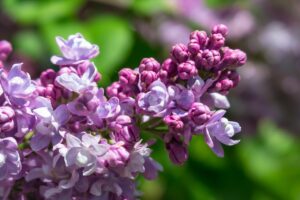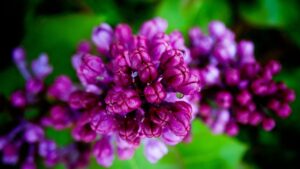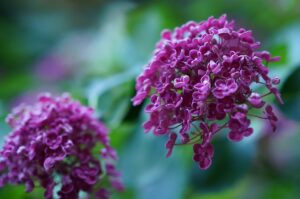Learn How to Grow and Care for New Hampshire State Flower with easy tips and tricks for a purple hue in your garden.
Discover How to Grow and Care for New Hampshire State Flower, the iconic Purple Lilac. Unveil the secrets behind successful growth, ensuring these vibrant blooms thrive in your garden.
Learn How to Grow and Care for Arizona State Flower
What is New Hampshire State Flower?

The state flower of New Hampshire is the Purple Lilac, scientifically known as Syringa vulgaris. It belongs to the Oleaceae family, which also includes olive trees and jasmine plants.
Appearance:
The Purple Lilac is a deciduous shrub that typically reaches a height of 8 to 15 feet. Its most prominent feature is the clusters of tubular-shaped flowers that form in bunches. These flowers come in various shades of purple, ranging from delicate lavender to deep violet. The blossoms are not only visually appealing but also emit a delightful fragrance that adds to their charm. The shrub’s green foliage serves as a beautiful backdrop for the vibrant blooms.
Native Place and Adaptation:
While the Purple Lilac is native to Southeastern Europe, it has found a comfortable home in the climate of New Hampshire. Despite its origins, it has adapted well to the state’s weather conditions and soil types. This adaptability has contributed to its popularity as a decorative and fragrant addition to gardens across New Hampshire.
Blooming Season:
The Purple Lilac heralds the arrival of spring in New Hampshire with its spectacular display of blooms. Its flowering season occurs during late spring, typically in May. This timing coincides with the transition from the colder months to warmer weather, making the lilac a symbol of renewal and hope.
Significance and Symbolism of New Hampshire State Flower
The Purple Lilac holds significant cultural and historical value for the people of New Hampshire. It’s blooming during the spring represents a fresh start and a reminder of the beauty that follows the harshness of winter. The sweet scent of lilacs in the air adds to the sense of joy and anticipation that accompanies the arrival of spring. Beyond its aesthetic qualities, the Purple Lilac is also a symbol of tradition and cherished memories, as it has been a favorite of gardeners and residents for generations.
Legislation and Designation New Hampshire State Flower
In 1919, the Purple Lilac was officially chosen as the state flower of New Hampshire through legislation. This decision was influenced by the lilac’s ability to thrive in the state’s environment and its popularity among the people. The legislative designation recognizes the lilac’s significance in New Hampshire’s culture and its contribution to the state’s natural beauty.
Origin and Cultivation Of New Hampshire State Flower
Although the Purple Lilac originally hails from Europe, it has become an integral part of New Hampshire’s landscape and identity. Over time, it has been successfully cultivated and integrated into the state’s flora. This process of adaptation and cultivation has transformed the lilac from a foreign import to a cherished native symbol.
Learn How to Grow Texas State Flower
How to Grow New Hampshire State Flower

The easiest method to propagate New Hampshire State Flower is through suckers.
- Lilacs can easily spread by sending out new shoots, known as suckers.
- If you wish to grow more of these plants, you can do so by gently digging around a new shoot. Separate it from the main plant, and be careful not to harm its roots.
- Afterward, you can replant it elsewhere and make sure it’s well-watered until its roots establish themselves.
Note: On the other hand, if you prefer to prevent the lilacs from spreading, you can manage this by cutting off any new shoots that appear, which will help keep the growth in check.
Read Texas Star Hibiscus Growing Information
Ideal Growing Conditions for New Hampshire State Flower

Location
Choose a sunny planting spot for New Hampshire State Flower. It thrives in full sunlight, requiring 6 to 8 hours of direct sun daily for optimal growth and abundant blooms.
Soil
Create a well-draining soil mix by combining equal parts of garden soil and compost with added perlite or sand for drainage. Aim for pH 6.5-7.5 and enrich with organic matter like compost and manure.
Water
New Hampshire State Flower requires moderate watering. Keep the soil consistently moist but not waterlogged, especially during the growing season. Deep, infrequent watering encourages root development. Once established, lilacs are somewhat drought-tolerant, but regular watering ensures healthier growth and better blooming.
Temperature and Humidity
New Hampshire State Flower prefers moderate to cool temperatures during summer months, up to 75 F. It favors USDA Zones 3-7; lilacs can manage cold temperatures in the winter.
Purple lilacs grow well in normal to less humid environments but cannot handle high humidity.
Note: Lilac cannot bear regions like the southern United States due to hot temperatures.
Read Sweet Potato Flowers and Their Uses
New Hampshire State Flower Care

Fertilizer
Before applying fertilizer to your New Hampshire State Flower, it will be better to test the soil first. This way, you’ll know if there’s a specific nutrient requirement. If not, you might not need to fertilize your lilacs for a few years. Be cautious about adding too much nitrogen, which can damage the plant.
Pruning
Lilacs need good air circulation to prevent diseases, which is achieved through proper pruning. This practice also maintains the plant’s health and shape.
The New Hampshire State Flower can grow up to 12 to 16 feet tall and 8 to 12 feet wide in various shapes. They typically bloom for 3-4 weeks in late spring, and pruning should be done after flowering. Prune around a third of the shrub each season, removing dead wood, spent flowers, and thick stems over two inches. Shape the remaining stems as desired.
Pests and Diseases
Common pests that can affect New Hampshire State Flower are;
- European Fruit Lecanium (Parthenolecanium corni)
- Aphids
- Fuller rose beetle (Asynonychus godmani)
- Citrus nematode (Tylenchulus semipenetrans)
- Ground mealybug (Rhizoecus kondonis)
- Oystershell scale (Lepidosaphes ulmi)
- Lilac borer (Podosesia syringe)
- Mice (Murinae subfamily)
- Voles (Arvicolinae subfamily)
Diseases in Purple Lilacs:
- Botrytis blight (Botrytis cinerea)
- Botryosphaeria spp. (causes fungal dieback)
- Armillaria root rot (Armillaria mellea)
- Bacterial blight or canker (Pseudomonas syringae pv. syringae)
- Verticillium wilt (Verticillium spp.)
- Nectria spp. (causes fungal dieback)
- Powdery mildew (especially prevalent in common lilacs)
- Tubercularia spp. (causes fungal dieback)
- Phomopsis spp. (causes fungal dieback)
- Phytophthora spp. (causes fungal dieback)
The most effective way to protect your New Hampshire State Flower from pests and diseases is to ensure it has the right conditions to grow well. Keep an eye on your plant for issues, and if you see any diseased parts, address them promptly by treating or removing them.
Read Chrysanthemum Morifolium Care and Growing Guide
FAQs

Q.1: Can I grow New Hampshire State Flower indoors?
A: While it’s challenging to grow Purple Lilacs indoors due to their size and light requirements, you can enjoy their cut flowers in vases indoors during the blooming season.
Q.2: Do Purple Lilacs attract pollinators?
A: Yes, New Hampshire State Flower is known to attract bees and butterflies with its fragrant blossoms, making them a beneficial addition to pollinator-friendly gardens.
Q.3: How do I address lilac suckers, and are they beneficial?
A: Lilac suckers are shoots that grow around the base of the plant. While they can be removed to prevent spreading, you can also use them for propagation by carefully transplanting them to new areas.



